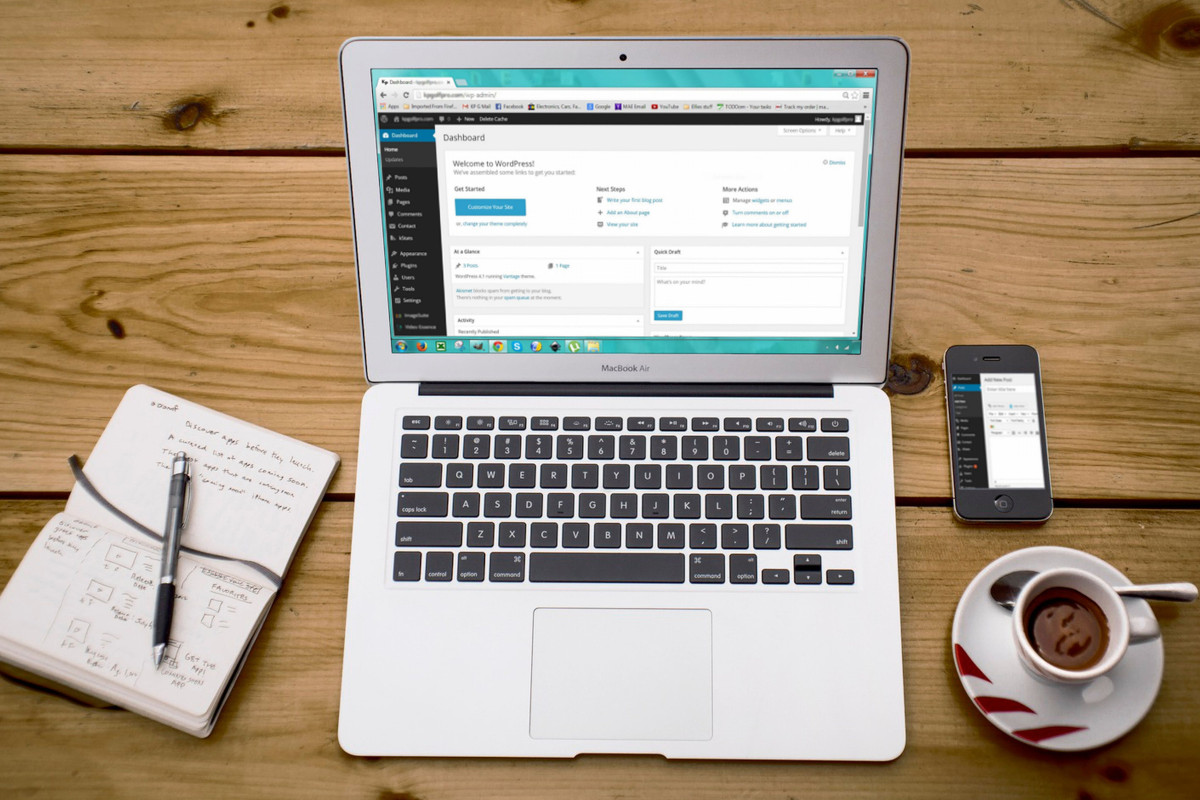As a fundraiser, you’ve probably wondered if blogging is worth the effort. You have already perceived that doing it well requires a significant dedication of time and resources. And, if you bet on it, it will take months to see the results.
Nowadays, it is difficult to find Non-Profit Organizations that uses their blog in a correct and sustained way as a fundraising tool. However, in 99% of cause organizations, a blog is essential to spread and attract new followers. It will contribute to your organization: the ability to generate traffic from Google (SEO), content to stimulate and generate traffic from your social networks, link with your potential audience and collaborators, and pages to propose CTAs (Calls To Action).
This post will help you to understand why worth betting on the blog, and how to do it optimally. Let’s see how to design and maintain a blog that will offer a great return on investment for your organization.
How to optimize a blog
Today, all kind of Non-Profit Organizations manage blogs to share their activity, and complement their reporting and awareness strategy. This is fine, but not enough. A well-focused blog will help you to increase web traffic, brand awareness, credibility, and engagement.
First step is to make sure that your blog captures the attention of the target audience. Before launching or relaunching a blog, you should answer questions like: why would someone read this post to the end ?; Why would someone come back for more later?
To start, a good post is interesting and educational. Blog posts should answer questions, help readers solve a challenge or need, and do it in an engaging way. The way you offer the information on your blog is just as important as the quality of the information itself. The introduction and structure of your publications should get the reader hooked and make them want to continue reading them until the end.
Know your audience
Before starting to write, you need to clearly define your target audience, and know their interests and needs. Analyze what you know about your audience before you start defining topics, categories, or posts for your blog. Ask yourself questions like: what do they want to know ?; What will make them feel alluded to ?; What will make them think that the blog is with them?.
For example, if your readers are people diagnosed with a serious illness, family members or friends of those people, they will not be interested in information about the disease. They already have medical attention for it. They need you to help them with ideas and resources to improve their quality of life, and face their new situation in the best possible way. That kind of setting is what will allow you to post content on topics that your audience really wants (and needs).
On the other hand, conducting a study on Internet searches related to your topic can offer you many clues about what your audience is interested on. In addition, it will help you to think of posts that respond to those searches, and to generate traffic to your blog.

Fotografía de Suzy Hazelwood de Pexels
What tool to use and where to publish your blog
To manage a blog you will need to have a CMS (Content Management System). WordPress is the most popular CMS on the Internet, and specifically designed to edit blogs. Probably your corporate website is using it.
In addition to technology, it is important that you choose a good hosting service, and that the installation and configuration of WordPress follow the good practices defined by the manufacturers. This will strongly impact on the download speed of your blog and on your ability to generate traffic from Google (SEO and web speed are closely linked).
When you are deciding where to publish the blog, you can choose between two options: create a subdomain on your website (blog.yourwebname.org) or make it a folder, one more section of those offered by your website (yourwebname.org/blog ). In general, the best option is the second one because it reinforces the main domain, and makes visitors see, continuously, your main conversions (make a donation, become a member, etc.). It would only be advisable to work with a subdomain if you want to launch a blog with its own personality very different from the main brand, or if there is some technical cause on your current website that makes it difficult to add the blog as a section (for example, that you use a CMS different from WordPress).
Once you have configured the technology, infrastructure and domain, it is important that you customize the appearance of the blog to reflect the topic it will be about, and adapt it to the brand of the organization. Here a very important factor comes into play: the UX (User Experience). The user experience is essential to capture the attention of visitors and to retain visits. And, of course, it must be designed for mobile, because more than 80% of the traffic you receive on your blog will be accessed from mobile devices.
Start posting content
Before you start writing, define your first post ideas and a posting schedule. As we have mentioned before, a study of Internet searches can help you. It will also help you to study the most important blogs in your field to familiarize yourself with possible types of publications and to get ideas.
If you have problems finding ideas about topics, you can also work on the line of searching, grouping and sharing the most relevant content in your field (content curation). And, from here, you can turn one idea into many: changing the scope of the topic, adjusting the time frame (updates); targeting a new audience, taking a positive or negative approach to the subject.
Topics can be quite general to begin with. For example, if your organization works on labor insertion, they can deal with the benefits that insertion generates for the whole of society, not only for the people affected.

Photo by Pixabay from Pexels
Post typologies
To shape your content, you must find a post and writing style that fits the target audience of your organization. You can also use different post formats that are very successful on the Internet, such as:
- Lists: “The 9 best digital marketing blogs for nonprofits.”
- Practical information: “How to organize a children’s activity”.
- Definitions: “What is a content curator?”
- Infographics: “Situation of the Mediterranean Sea and actors involved”.
- News: “A new study shows that homeless people …”
- Third party articles. Posts signed by relevant people in your field.
- Thoughts from world leaders: “What does Barack Obama think about …”
Edit and polish content
As we’ve mentioned, the title and introduction are two key pieces of your post: they should hook the reader. I recommend that after having all the content written, spend some time rethinking the title and introduction to make them more attractive. It’s essential that they generate empathy, trust and arouse curiosity. You can approach it in different ways: telling a story, being empathetic, using humor, raising an interesting fact or statistic, raising an unknown or a paradox…
It is also important that you describe the purpose of your publication and explain how it will solve a need that the reader may be experiencing. This will make the reader feel alluded by the publication: that he/she perceives that it is intended for him/her and that it will help him/her.
Review the extent and structure of the information. Sometimes posts can have a large amount of content. For this reason, it is necessary to subdivide it into sections, introduce internal titles and design highlights that are presented with a differentiated graphic from the rest of the text. Creating an internal structure of your content is very important so that readers do not get discouraged midway.
Now we almost have it, just three more steps
Accompany the text with the appropriate photographs or graphic elements. Use these elements to lighten the weight of the text and help to structure the information. The quality of the graphic elements that accompany your content has a great impact on the perception of the reader and the opinion that is generated about your blog. According to statistics, content with relevant images receives 94% more views than content without relevant images.
At the end of each post, try to insert a call to action with what you propose the reader to do next: subscribe to the blog, download content, sign up for a webinar or event, comment on the post, read a related article, etc.
Visitors who read the post and respond to the CTA, link to your organization and increase your database of related audiences. But the CTA is also a valuable resource for the person who reads your content: they can access more content similar to what they have already read.
For example, let’s imagine a post about “Tips for healthy, easy and cheap cooking for a large family”. It would be easy to extend the research and writing work to make a small guide on the matter. In this way, at the end of the publication we could introduce a CTA that allows readers to download the guide after leaving us their contact information.
Optimize your content for SEO. I recommend that you install the Yoast SEO plugin (a small program added to WordPress), which will guide and help you with this topic. It is not necessary to obsess over keywords, or write bizarre texts to add them, but it is highly recommended to take this issue into account to increase the generation of traffic to your organization’s blog.
Ready to start?
A blog can help you to build brand awareness, make your organization a benchmark for your target audience, attract donors, and increase conversions. Follow the advice we offer you in this post to start publishing and improving your blog. Surely, with work and love, it will pay off. And remember that the effort must be honest; that you need offer something significant to your target, whatever it costs; and that you should not focus on quantity, but on quality: when one person of your target visits your blog, you have to make a good and deep impression on it.